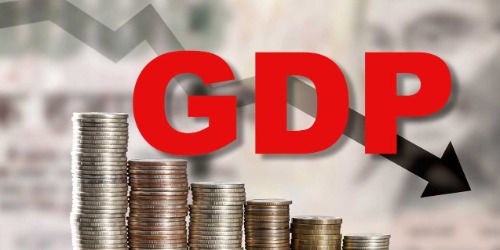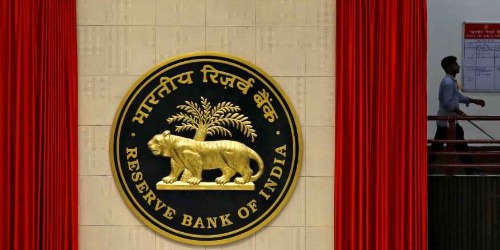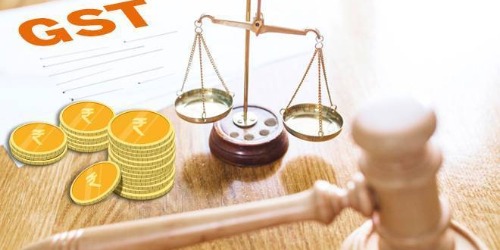India's unemployment rate in March rises to nearly 9%, highest in 43 months: CMIE

Even as India fights the spread of COVID-19 pandemic, India's unemployment rate surged to nearly 9 per cent, highest in the last 43 months, according to data released by think-tank Centre for Monitoring Indian Economy (CMIE). The unemployment rate stood at 8.74 per cent in March, highest since August 2016 when demonetisation happened, CMIE data showed. In August 2016, the unemployment rate was 9.59 per cent. While the unemployment rate was recorded at 9.35 per cent in urban areas, it stood at 8.45 per cent in rural parts of the country, the data showed. In February, it was recorded at 7.78 per cent.
The unemployment rate largely remained under 8 per cent from April 2019 till February 2020, except in July and October when it surpassed the 8 per cent mark.
Unemployment rate in states
Tripura was the state with the highest unemployment rate for March at 29.9 per cent, according to CMIE's monthly time series. Puducherry with 1.2 per cent was the state with the lowest unemployment rate.
Labour participation
The labour participation rate fell to 41.9 per cent in March, lowest since January 2016 (when CMIE started with this survey). The employment rate also fell to its worst of 38.24 per cent (lowest since CMIE began the survey). The number of unemployed people who were actively looking for a job was reported at 3.79 crore. This is the highest since October 2016, when 3.85 crore unemployed people were actively looking for a job. The labour force in India in March 2020 stood at 43.3 crore. Meanwhile, the Consumer Pyramids Household Survey was suspended during the week ended March 29 because of the lockdown.
INDIA CORONAVIRUS TRACKER: BusinessToday.In brings you a daily tracker as coronavirus cases continue to spread. Here is the state-wise data on total cases, fatalities and recoveries in one comprehensive graphic
- 0
- Leave a comment
Coronavirus: India's manufacturing activity growth at 4-month low

India's manufacturing activity expanded at its slowest pace in four months in March and is likely to get worse as demand and output take a hit from the coronavirus outbreak, putting a severe dent in business optimism, a private survey found.
A 21-day nationwide lockdown, which started on March 25 in the world's second most populous country, is expected to deliver a heavy shock to the economy despite massive fiscal and monetary support packages by the government and the Reserve Bank of India last week.
The Nikkei Manufacturing Purchasing Managers' Index, compiled by IHS Markit, declined to 51.8 last month from February's 54.5, its lowest since November but still above the 50-mark that separates growth from contraction for a 32nd month.
"The Indian manufacturing sector remained relatively sheltered from the negative impact of the global coronavirus outbreak in March, however, there were pockets of disruption and a clear onset of fear amongst firms," noted Eliot Kerr, economist at IHS Markit.
"The most prominent signs of trouble came from the new export orders and future activity indices, which respectively indicated tumbling global demand and softening domestic confidence."
A sub-index that tracks overall demand in the sector hit a four-month low as foreign demand contracted for the first time in nearly two and a half years, falling at its fastest rate since September 2013.
That was despite input and output prices increasing at their weakest in five and six months, respectively, a sign of a decline in overall inflation, which has continued to remain above the RBI's medium-term target for five months.
Lower price pressures could provide additional room for the central bank to ease policy further. It cut its key interest rates by 75 basis points and introduced a stream of unconventional measures last week.
Optimism about output over the coming 12 months fell to a low not seen since October 2015, echoing the findings of a Reuters poll which forecast Asia's third-largest economy to grow at its weakest pace in the fiscal year 2020/21 since the global financial crisis.
"Should the trajectory of injections continue in the same vein, the Indian manufacturing sector can expect a much sharper negative impact in the coming months, similar to the scale seen in other countries," added Kerr.
Coronavirus lockdown to cost India nearly $100 billion, claims ratings agency

The economy is expected to lose nearly $100 billion during the 21-day lockdown due to coronavirus, a credit rating agency said. Each day of the shutdown may cost the economy more than $4.5 billion, Acuite Ratings said in a report. In the last week of March, Prime Minister Narendra Modi announced a three-week complete lockdown of the country until April 14 to prevent spread of coronavirus. Q1FY21 GDP is expected to see a risk of contraction to the tune of 5 per cent to 6 per cent with Q2 also likely to record a muted growth, the rating agency also said. Despite the expectation of a significant economic revival in the second half, the overall GDP growth for FY21 may remain in the range of 2 per cent to 3 per cent, Acuite Ratings added.
The worst affected services due to the lockdown include transport, hotel and restaurant and real estate. These industries account for nearly 22 per cent in GVA. "We are expecting around 50% loss in these sectors in Q1 of FY21. Agricultural sector that accounts for 15% of GVA will be relatively less impacted as crop harvesting and food distribution activities will continue; however, livestock and fishery segments to witness mute demand and lower the sector's average 3.5-4% growth", Acuite Ratings said in the report.
Moody's Investors Service has also slashed its estimate of India's GDP growth for the calendar year 2020 to 2.5 per cent from an earlier estimate of 5.3 per cent, citing the rising economic cost of the coronavirus pandemic.
Meanwhile, both the government and the RBI have announced a slew of measures to mitigate the negative impact of COVID-19 on the economy. Finance Minister Nirmala Sitharaman last month announced a relief package worth Rs 1.70 lakh crore to help the nation's poor tackle the financial difficulties arising from coronavirus outbreak. Similarly, the RBI has announced proposals to provide relief to the loan borrowers, state governments, exporters and banks.
RBI announces more measures to deal with coronavirus fallout

A week after announcing several steps to boost demand in the wake of coronavirus crisis in India, the Reserve Bank of India (RBI) on Wednesday launched additional measures. The central bank has decided to extend realisation period of export proceeds, limits of way and means advances (WMA) of states/UTs, and mechanism for counter-cyclical capital buffer (CCyB).
Extension of export proceeds realisation period
Presently, the value of the goods or software exports made by the exporters is required to be realised fully and repatriated to the country in 9 months from the date of exports. The RBI has now extended the time for exports made up to or on July 31, 2020, to 15 months from the date of export. The measure will enable them to realise receipts, especially from COVID-19 affected countries, in the extended period and provide greater flexibility to negotiate future contracts.
Review of WMA limit enhanced
The RBI has decided to increase the WMA limit by 30 per cent from the existing limit for states/UTs to enable them to tide over the situation arising from the COVID-19 pandemic. The revised limits will come into force from April 1 till September 30.
Implementation of countercyclical capital buffer extended
The RBI had put in place the framework on counter-cyclical capital buffer (CCyB) on February 5, 2015, wherein it was advised that the CCyB would be activated as and when the circumstances warranted. This framework envisages the credit-to-GDP gap as the main indicator, which is used in conjunction with other supplementary indicators, the RBI said. Based on the analysis of CCyB indicators, the apex bank has decided that it is not necessary to activate CCyB for one year or earlier, central bank said.
Amid the 21-day lockdown in India, the RBI's Monetary Policy Committee, in its meeting held between March 24-27, decided to cut repo rate by 75 basis points to 4.4 per cent, while the reverse repo rate has been reduced by 90 basis points. Calling the current times "extraordinary circumstances", the RBI Governor said the MPC voted for a sizeable reduction in repo rate to revive growth, mitigate COVID-19 impact.
Coronavirus effect: GST collection slips below Rs 1 lakh crore mark in March, hits 5-month low

Goods and services tax (GST) collection has slipped below the Rs 1 lakh crore mark in March, hitting five month low of Rs 97,597 lakh crore, due to the impact of the novel coronavirus outbreak on the economy. In the last four month, the GST collection had crossed the Rs 1 lakh crore mark on the back of anti-evasion steps taken by tax officers.
The GST revenue collection stood at Rs 97,597 lakh crore in March, reporting a decline of 4 per cent over the same month last year. The collection, however, was lower than the Rs 1.05 lakh crore collected in February 2020. The total number of GSTR-3B Returns filed for the month of February up to March 31, 2020 was 76.5 lakh.
The GST collection for March include CGST (Central GST) of Rs 19,183 crore, while SGST (State GST) and IGST (integrated goods and services tax) have been recorded at Rs 25,601 crore and 44,508 crore, respectively. Cess for the month stands at Rs 8,306 crore.
"The gross GST revenue collected in the month of March, 2020 is Rs. 97,597crore of which CGST is Rs. 19,183 crore, SGST is Rs. 25,601 crore, IGST is Rs. 44,508 crore (including Rs. 18,056 crore collected on imports) and Cess is Rs. 8,306 crore (including Rs. 841 crore collected on imports)," according to a statement released by Ministry of Finance on Wednesday.
Taking into account the GST collected from import of goods, the total revenue during March has decreased by 8 per cent in comparison to the revenue during March, 2019. During last month, the GST on import of goods has shown a negative growth of (-) 23 per cent as compared to March, 2019.
For the full financial year 2019-20 (FY20), the GST for domestic transaction has reported a growth of 8 per cent over the revenues during last year. During the year, GST from import on goods fell down by 8 per cent on the yearly basis. Overall, gross GST revenues rose at 4 per cent over the same period last year.
As per the statement, the government settled Rs 19,718 crore to CGST and Rs 14,915 crore to SGST from IGST as regular settlement. In addition, Centre has also apportioned unsettled balance IGST of Rs 6,000 crore on ad-hoc basis in the ratio of 50:50 between centre and States/UTs. The total revenue earned by central government and the state governments after regular settlement in the month of March was Rs 41,901 crore for CGST and Rs 43,516 crore for the SGST.


